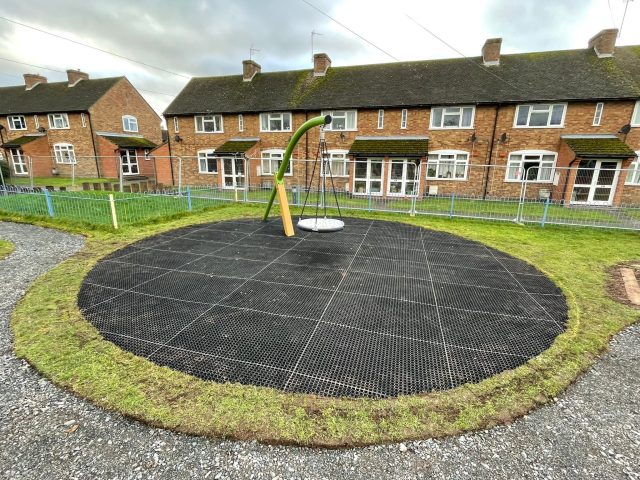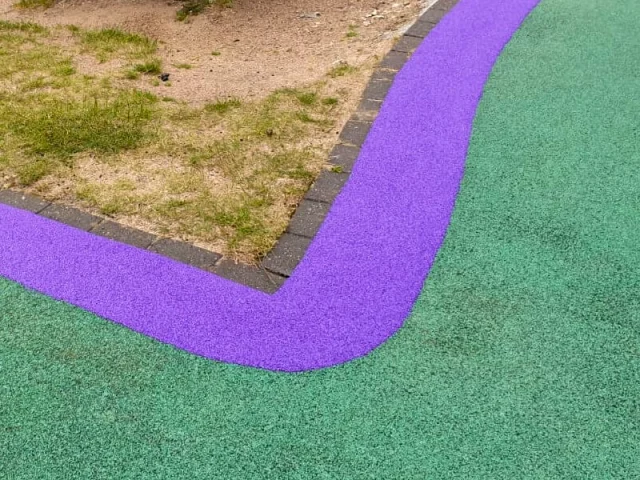Common Hazards to Add to Your Playground Inspection Checklist
Based on our 21 years of work in the surfacing industry, PlaySmart are experts in creating and maintaining safe surfaces. Therefore, our clients often come to us asking about to how avoid and manage playground hazards. We recommend a regular and comprehensive playground inspection routine and maintenance from the experts at PlaySmart.
This is a comprehensive playground inspection checklist for you to follow to ensure your playgrounds remain safe and hazard-free for children to play.
1. Contaminants in Surfaces
One common problem with rubber mulch is that it may contain contaminants if not sourced properly. Recycled rubber mulch is a cheaper alternative to virgin rubber, but can cause dangers to children playing. PlaySmart sources our JungleMulch from used tyres that undergo a strict and full inspection, mulching, and filtering process. This assures our clients that their surfaces will not contain any contaminants from the manufacturing process.
Surface inspection is vital throughout the lifespan of your surface. While PlaySmart’s surfaces will not contain any harmful wire or sharp plastic contaminants, over time, material can become embedded in the surface. Sticks, stones, or metal can get trodden in deeply with the use of the playground. This can make it especially difficult to see and remove.
Inspections should therefore take extra care to check every corner of the surface and cordon off hazards that cannot be removed immediately while waiting for professionals. Surfacing professionals can then remove impacted areas of surfacing and replace them seamlessly with new materials.
2. Drainage Problems
Depending on the underlying surface, land gradient, and flooring material choice, drainage, or lack thereof, may become a significant playground hazard. Preliminary inspections of the surface before installation work will reveal if your site is likely to experience drainage problems. These checks indicate if the chosen material is the best to use.
PlaySmart provides a variety of surfaces that work with natural drainage systems to prevent flooding and puddling. SmartPave and Corkeen are the best water permeable surfaces that quickly remove surface water and distribute it safely into soil groundwater stores. Using these water-permeable surfaces in areas most at risk of flooding can help reduce safety risks on the playground from standing water and puddles.
If drainage is a problem for your playground, you need to select a more appropriate surface for your site. If you’re not looking to replace larger sections of surfacing, we recommend installing drainage channels in key areas of the playground, or strategically placing vegetation to divert rainwater with leaf cover or groundwater through root systems.


3. Rubber Wear
Over time, even high-quality rubber surfaces may begin to wear. This is a particular problem in areas that see heavy or regular use, such as pathways or landing areas under playground equipment. You should take extra time during each playground inspection and conduct safety tests on areas that seem worn down. This allows you to know when you need replacements or repairs in order to maintain a level of safety.
EPDM rubber wear pads are a popular solution to reinforce and protect worn-down areas. The vibrant true-colour virgin rubber has a greater tensile strength than wetpour rubber, meaning that it lasts longer and provides additional fall protection in key areas. It also fixes aesthetic concerns over cracks and visible rubber wear by adding a unique feature with fun colours and shapes.
4. Shrinking Edges
As wetpour surfaces go through the seasons, the rubber can expand and contract, weakening certain areas and creating gaps between sections of surfacing. These gaps can not only pose a tripping hazard, but can also further weaken the rest of the surface. Ultimately, if edges begin to visibly shrink away at the edges, you need to consider surface maintenance.
PlaySmart uses EPDM rubber strips in a similar way to wear pads. The strong rubber provides an extra barrier of safety to reinforce weaknesses in the rubber. This not only disguises cracks and gaps, but also creates a clean visible edge to pathways and play areas.


5. Grass Mat Subsidence and Sinking
Over time, if not installed properly, the fall height protection of your grass mats may decline, putting children at risk of injury. Inspection involves measuring the height of grass mats to find differences and checking that the sides are still neatly recessed into the surrounding turf.
Too dry or too wet soil can also be a cause of grass mat subsidence. If surfaces are becoming visibly muddy or sandy, the soil may no longer be suitable for safe play with the grass mats alone- extra protection is required.
SmartPlay mats add an extra layer of protection to prevent this sinking as the pressure from use is spread over a larger area. It is also key to providing the safest surfacing possible as an ultra-protective shock pad underlay for grass mats. Grass growth may also help to stabilise grass mats, extra grass seed and watering can help facilitate this growth, the grass hides the mats and can prevent further mat sinkage.
Has your Playground Inspection Uncovered any of these Hazards?
If you notice any playground hazards when undertaking your inspections, contact our maintenance team via our contact form or by calling: 01564 742811.


